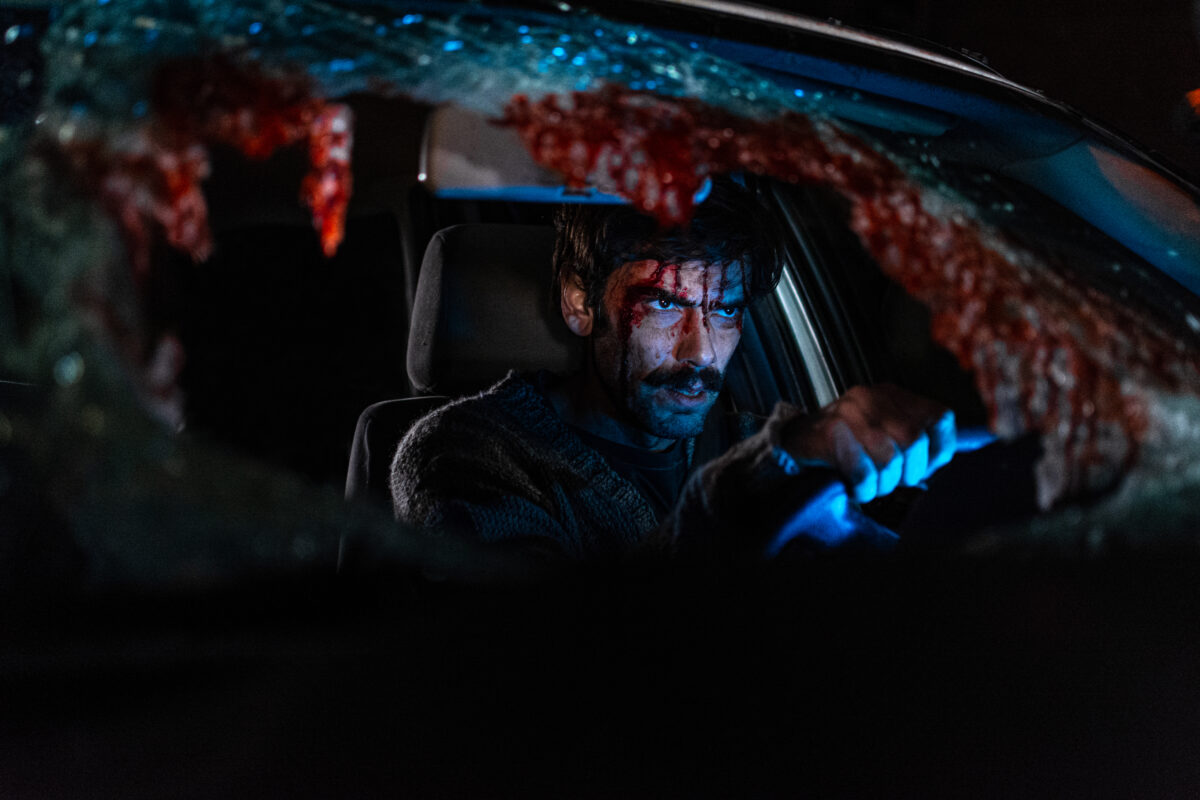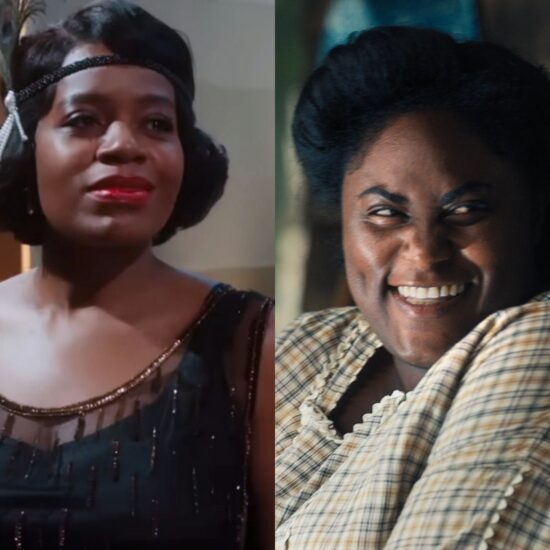
Disease has always been fertile ground for the horror genre: what’s a zombie or vampire movie if not the story of a particularly nasty virus making its way from host to host? Demonic possession onscreen often has a similar subtext; look at the definitive example, 1973’s “The Exorcist,” where hosting an ancient evil leaves a little girl bedridden, covered in sores, and vomiting her stomach out.
“When Evil Lurks,” from Argentinian director Demián Rugna, takes the virus imagery and symbolism and runs with it as the central conceit, placing the audience in a tiny community that goes through, essentially, a rapidly escalating epidemic of demonic possession. An improperly disposed patient zero introduces the plague of demonic terror upon the small rural village, slowly infecting man, woman, child, and dog, and forcing families to flee for their lives.
It’s a fun premise that, thankfully, doesn’t strain hard at relevancy for any specific COVID-19 parallels, but the film doesn’t quite trust the audience to pick up on the obvious, forcing the main character’s son to bluntly say “like a disease?” when the demonic threat is explained to him. It’s a moment of unneeded hand-holding indicative of the film itself, which aims to be atmospheric, nasty fun but frequently gets in its own way.
Like one of the film’s infected, Rugna’s movie starts strong but deteriorates rather quickly. The story kicks off immediately when brothers Pedro (Ezequiel Rodríguez) and Jimi (Demián Salomón), from the home they share, hear odd noises in the night, and investigate the next day to find that their neighbor Uriel has become a “rotten”: a grotesque, memorably nasty swollen blob of flesh and boils host to a horrific evil, the mere presence of which puts every living being in danger of demonic possession.
Easily the smartest choice in Rugna’s script is to keep exposition initially elusive. Both Pedro and Jimi are very aware of what a rotten is; in the film’s world it’s a common phenomenon, albeit more seen in big cities than the farmland where they live. Very little detail of how society has been shaped by this horror is revealed in favor of focusing purely on the one case at hand. How the rotten functions and the rules for dealing with them — you can’t shoot them, you can’t use electric lights around them — is information dolled out sparingly, making the opening scenes an intriguing slow boil where half the appeal is piecing the logic of the world together.
Upon discovering that Uriel’s family has been keeping him hidden for the better part of a year, Pedro and Jimi inform the rich local landowner Ruiz (Luis Dziembrowski), whose livestock have been growing sick thanks to the rotten’s influence. In a move that instantly makes a case for the Bad Horror Movie Decision Hall of Fame, Ruiz convinces the two to help him forcibly take Uriel from his family and dispose of him outside their community’s limits; when Uriel falls out of their truck and gets lost mid-journey, the men decide that was good enough and return home without attempting to find him. Predictably, the possessions start spreading quickly from there, and Pedro and Jimi attempt to gather their family and flee the community while they still can.
If the film’s first 20 minutes introduce it as slow and atmospheric horror, the sequence where the possessions begin to spread dispels that impression quickly. All pretenses of subtlety are dropped for kills and scares that are more lurid and outrageous than scary, including a little girl getting viciously thrown around like a chew toy by a possessed dog. It never quite becomes an outright horror comedy, but moments where Pedro strips in his ex-wife Sabrina’s (Virginia Garofalo) house and burns his clothes without explaining himself make the film feel far lighter and sillier than it did before. Still, Sabrina’s home and the town at large descending into chaos as the possessions begin to spread during a sunny day is manic fun to watch onscreen, delivering on the promise of rapidly expanding danger a viral possession promises. The movie remains entertaining, although the shift in energy leaves you to wonder what type of horror film you’re actually watching.

Ultimately, “When Evil Lurks” settles on “a boring one.” After Pedro and Jimi get on the road with Pedro’s sons and their elderly mother, the movie has already peaked in intrigue and entertainment, and begins spinning its wheels until finally ending. The film’s initial withholding of exposition is replaced by the brother’s mother Sara (Paula Rubinsztein) telling Pedro’s youngest Santino (Marcelo Michinaux) all the rules of how to deal with the rotten, including several that have previously been mentioned just to make sure the viewers didn’t miss it. The vagueness of the world and how the rotten function begin to feel less like an intentional choice than a sign of poor planning: it never becomes totally clear what separates those who get possessed from those who don’t, and many of the “rules” aren’t brought back in a meaningful way.
Rather than leaning into the chaos and tension that a demonic epidemic could cause, the film makes the odd choice to downplay the premise in its back-half, never addressing how the broader community is responding to the possessions in favor of following the brothers as they take refuge with Mirtha (Silvina Sabater), a “cleaner” with the tools to destroy the rotten and a tendency to doll out clunky sayings like “evil loves children, children love evil.” With the thrills of its premise replaced by largely rote scares and a climactic foray into the most boring and unfrightening haunted school of all time, “When Evil Lurks” begins relying on its characters and their relationships, particularly Pedro’s strained bond with his sons, to give it any weight.
But the characters are uniformly wafer-thin — Jimi and Mirtha have a romantic past that translates to zero onscreen heat — and in Pedro’s case, his backstory of previously abandoning his sons is referred to briefly without it ever impacting his interactions with them in any notable way. Especially galling is the portrayal of Pedro’s eldest Jair (Emilio Vodanovich), whose autism leaves him largely unable to speak. The script treats him as a plot device more than an actual person — there’s some exposition about how demons invade autistic people’s bodies but struggle for control because they “can’t figure out their minds” — so when the story abruptly begins to hinge on our investment in him and his father, it feels like the movie expecting the audience to care about someone it barely cares about itself.
A fun premise can get a horror film far, and “When Evil Lurks” has one that could be taken to interesting, terrifying places. But rather than lean into what makes its world of demonic diseases intriguing, the film squanders its own potential by leaning into its worst qualities and instincts. Instead of giving us something feverishly nightmarish, it ends up running as tepid as a minor head cold.
Grade: C
“When Evil Lurks” premiered at the 2023 Toronto International Film Festival. It will premiere in theaters on Friday, October 6 before streaming on Shudder on Friday, October 27.















